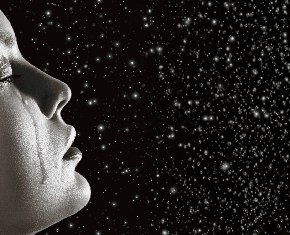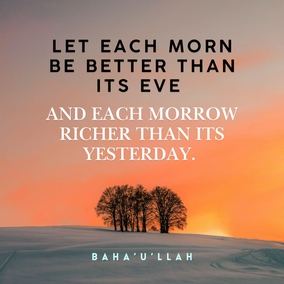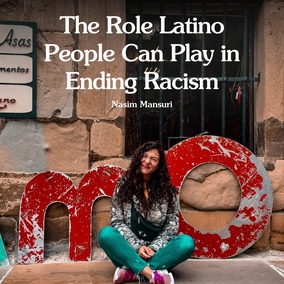The views expressed in our content reflect individual perspectives and do not represent the authoritative views of the Baha'i Faith.
When we understand the spiritual and psychological maps of human development as seeker’s paths, the directions they give us begin to look remarkably similar.
If you compare the seeker’s paths from the mystical traditions to the various modern roadmaps of moral and psychological development, guess what? They all work in much the same way as Maslow’s and Kohlberg’s and Baha’u’llah’s Seven Valleys and Four Valleys do: in stages of development that encourage and guide our inner growth from the specific to the universal, from the fragmented to the unified, from the child to the adult, from inner-directed to other-directed, from the limited to the unlimited, from self-absorption to self-transcendence, from search to knowledge to love.
The Baha’i teachings put it poetically:
… until the wayfarer taketh leave of self, and traverseth these stages, he shall never reach to the ocean of nearness and union, nor drink of the peerless wine. – Baha’u’llah, The Seven Valleys, p. 4.
This eternal idea of transcending the self and the ego, summarized in many places, isn’t new—it’s ancient. Best expressed in the perennial philosophy, it identifies a ladder of expanding levels of consciousness at each distinct phase of human development. The philosopher Ken Wilber defines it like this:
There is a much more sophisticated view of the relation of humanity and Divinity, a view held by the great majority of the truly gifted theologians, philosophers, sages, and even scientists of various times. Known in general as the “perennial philosophy”… it forms the esoteric core of Hinduism, Buddhism, Taoism, Sufism, and Christian mysticism, as well as being embraced, in whole or part, by individual intellects ranging from Spinoza to Albert Einstein, Schopenhauer to Jung, William James to Plato. According to the perennial philosophy, this path of transcendence follows what is called the ’Great Chain of Being,’ which is said to be a universal sequence of hierarchic levels of increasing consciousness. – Up From Eden, pp. 3, 7.
Wilber accurately describes the perennial philosophy as “… a universal sequence of hierarchic levels of increasing consciousness.” The perennial philosophy’s powerful unifying idea expresses the transcendent, underlying foundation of all mystical knowledge, common to every great Faith and to the great chain of being formed by all the world’s major religions.
How does it work? The perennial philosophy basically says that all religions share a single, universal truth; and that all faith aims to reveal the ultimate purpose of life to humanity. This unifying view, which the Baha’i teachings have long proclaimed, sees the divine origin of the world’s great Faiths as different stages in the history of one, single, progressively-revealed Faith, what Baha’is call progressive revelation:
Contemplate with thine inward eye the chain of successive Revelations …. I testify before God that each one of these Manifestations hath been sent down through the operation of the Divine Will and Purpose, that each hath been the bearer of a specific Message, that each hath been entrusted with a divinely-revealed Book and been commissioned to unravel the mysteries of a mighty Tablet. The measure of the Revelation with which every one of them hath been identified had been definitely fore-ordained. This, verily, is a token of Our favor unto them, if ye be of those that comprehend this truth…. – Baha’u’llah, Gleanings from the Writings of Baha’u’llah, p. 74.
Just as they proclaim the oneness of all Faiths, the Baha’i teachings and the perennial philosophy merge many of the seeker’s paths that originate in our psychological theories, myths and belief systems.
Each person who takes a path toward inner maturity can probably locate themselves somewhere on one of these maps. Following a path of spiritual development means gaining inner knowledge with the goal of transcending ourselves and expanding our moral consciousness. Every one of these paths urge us to leave the smaller, more constricting, more temporal levels of psychological development in favor of the wider, the higher, the more unified.
The scientist/philosopher Guy Murchie described this universal law of the progress of the spirit in his book The Seven Mysteries of Life:
To be sure, the self is elementary and down-to-earth, as any beginning tool must be if it is to be grasped and used. But this doesn’t mean it is fixed and unchangeable. For, as with time and space, your spheres of awareness inevitably increase and in imperceptible but progressive stages you find and lose yourself as part of a family, a nation, a world … And, without forgetting your name or who you are, if you are growing spiritually, you begin to care less what happens to you and increasingly think and feel and act in causes beyond your individual self—at the same time letting that self diffuse and re-condense into a bigger, more universal consciousness. – p. 518.
The genius of this big idea–a scientific, stage-development model of human spiritual maturity—lies in the immutable, universal natural law of higher-order structures emerging and evolving from the lower.
The Baha’i writings, especially the mystical books of Baha’u’llah, address this concept in beautiful, lyrical and powerful ways. Baha’u’llah offers the world two maps of spiritual growth, one of them with the traditional seven stages the Sufis typically utilized, called The Seven Valleys. The other model, The Four Valleys, features a mystical description of the four stages of the human heart on its spiritual journey.
Interestingly, the religious scholar and historian Huston Smith also drew a four-stage map, which closely parallels the spiritual path Baha’u’llah described. In our next installments in this series of essays, we’ll explore and compare those profound approaches to spiritual growth and development.
















Comments
Sign in or create an account
Continue with Googleor